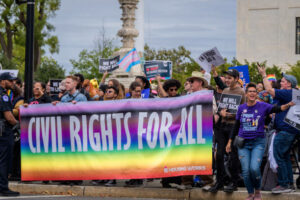
The epidemic of workplace violence and harassment
A workplace violence and harassment epidemic is currently gripping Australia. Statistics from Safe Work Australia reveal that 37 per cent of workers have been sworn or yelled at while working. While 25 per cent have been physically assaulted, either by clients or co-workers.
Additionally, 8.6 per cent of Australians have experienced workplace bullying. And when it comes to workplace sexual harassment, the numbers are startlingly worse. The Australian Human Rights Commission (AHRC) states that around a third of Australian employees have experienced workplace sexual harassment during the last five years.
With such damning statistics, the federal government is making moves to help stem the tide of workplace violence and harassment across Australia. In this article, we outline how recent legislation aims to tackle the problem. We explain the new rights that Australian workers now have to help protect them from workplace violence and harassment. And we detail how the government plans to bolster these protections even further with new landmark laws.

Stories of workplace violence and harassment are common in Australia
Given the statistics, there’s a good chance that at one point in your working life you have been victim to workplace violence and harassment. And these days, victims are increasingly sharing their stories on social media. Some of these stories, like that of this Victorian primary school teacher on Reddit, not only provide a real-life glimpse of workplace violence and harassment. But also, the frustrations many face in attempting to bring their harassers to justice.
In the post, the teacher shares that one of her colleagues is being bullied and victimized by the school principal. And that attempts to address the situation are leading to no action. “The union has been involved with not much help,” she writes. “Attempts to solve it internally have been made to no avail.” The teacher says that the victim “is being consistently and specifically targeted” and that the principal has been “doing several unprofessional and dodgy things.” But despite complaints being made, “it’s not amounting to anything at this point.”

The fear of reporting workplace violence and harassment often holds victims back
Another challenge that victims face is that they are being harassed by superiors who have significant power within the company. And this can prevent victims from making a complaint about their workplace violence and harassment. This is what happened to a Melbourne IT worker, who shared his story of workplace bullying on Reddit.
“I am being bullied at work by a co-worker (who has a lot of pull in the company) who keeps dropping hints that I’m getting made redundant /fired,” writes the IT worker. “The guy that is being a dick is good friends with the manager of the company.” The fact that the abuse is coming from a senior colleague is stressful enough. But the worker also fears losing his job for making a bullying complaint. “It makes me anxious and emotional as I have no money saved and I am locked in a lease for my house I’m renting,” he writes.
Toxic workplace victims are increasingly being heard
It may be disheartening to know that Australia’s workplace violence and harassment epidemic continues to worsen. And that many victims feel hopeless when they attempt to make a complaint about their harassment. But at the same time, there are encouraging signs that victims are being heard more than ever before.
In the past few years, we’ve seen several employees receive generous payouts for having suffered workplace violence and harassment. Not willing to settle for the abuse they had suffered, these employees took action through the Fair Work Commission. By filing general protections claims, or unfair dismissal claim they were each awarded very generous payouts.

Employee awarded $5.2 million after suffering workplace violence and harassment
In 2020, a senior employee for tech company TechnologyOne was awarded $5.2 million as a result of his general protections claim. The employee alleged that the bullying and victimisation he suffered caused a mental breakdown that left him “unable to ever work again.” The employee also alleged adverse action against the company for having unlawfully dismissed him. That is, for making a several complaints about his harassment.
Employee awarded $2.8 million after suffering workplace violence and harassment
In 2022, a marketing manager for the Hawkesbury Racing Club was awarded $2.8 million as a result of her general protections claim. The manager had suffered intense bullying form the CEO over a number of years.
She alleged that Hawkesbury Racing club had taken adverse action by obligating her to attend a performance management meeting. That is, because she had complained about the CEO’s bullying. The manager also alleged adverse action was taken by removing her entitlements. Also, by telling her colleagues and external stakeholders that she wouldn’t return to work as a result of taking sick leave.

Government acts to curb workplace violence and harassment with Secure Jobs Act
These damages are perhaps indicative of a major change in the way Australia’s court system now treats workplace violence and harassment. And this shift is also being seen among Canberra lawmakers.
In December 2022, the Secure Jobs Act was passed into law. The law introduces a number of significant amendments to the Fair Work Act (2009). These amendments are considered by many as the biggest changes to Australia’s federal industrial relations system since the Fair Work Act was implemented. These amendments will take effect throughout 2023, with the first amendments having taken effect on 6 March 2023.
The Secure Jobs Act amendments aim to improve the working lives of Australian employees. This includes improvements to the rules around flexible work requests and fixed term contracting. It also makes it illegal for employers to mandate pay secrecy among employees. Workers now have the legally protected right to share what they are being paid with colleagues. This change aims to help equalise the Gender Pay Gap by allowing female workers to know if they are being paid less than their male counterparts.

Secure Jobs Act aims to address rampant workplace sexual harassment
But perhaps the most significant impact of the Secure Jobs Act are the changes it introduces with regard to workplace violence and harassment. The changes add a new provision to the Fair Work Act 2009 that expressly prohibits workplace sexual harassment. The provision makes it illegal for an Australian employee to sexually harass a colleague. And if the provision is breached, employees can now lodge incidents of workplace sexual harassment with the Fair Work Commission.
The Fair Work Commission now has the power to conciliate disputes around workplace sexual harassment. A key outcome of conciliation can include making a stop sexual harassment order – a measure that was previously introduced to the Fair Work Act in 2021. Under the new provision, it’s now possible for two or more employees to make a joint stop sexual harassment order against more than one perpetrator.
If a resolution isn’t achieved through conciliation, the Fair Work Commission can escalate any contravention of the sexual harassment provision to the courts. And for the first time, courts will have the ability to hand down financial penalties to those found guilty of workplace sexual harassment. The new provision prohibiting workplace sexual harassment covers any Australian worker or prospective worker. It also covers any third party. That is, a contractor, subcontractor, student, apprentice, trainee, volunteer or customer.

The move to ensure employers proactively prevent employee damaging employers
The Secure Jobs Act isn’t the only recent legislative milestone aiming to protect Australians from workplace violence and harassment. In November, the federal government’s Respect@Work bill passed parliament. If made into law, the Respect@Work bill will help curb workplace violence and harassment by placing more responsibility on employers. Namely, it will place the burden on employers to proactively implement measures that prevent workplace sexual harassment, sex discrimination and victimisation.
In essence, the Respect@Work bill aims to shift Australia’s sexual harassment laws from being complaints driven, to proactive. The bill also proposes to make employers vicariously liable for the sexual harassment committed by their employees or agents. That is, unless the employer can prove that they took reasonable steps to help prevent the sexual harassment.

How the government aims to further stem toxic employers
With parliament recently passing the Respect@Work bill and the Secure Jobs Act, the federal government now aims to bolster Australia’s commitment to worker safety even further. In November 2022, the Albanese government announced plans to ratify the International Labor Organization’s (ILO) convention on the elimination of workplace violence and harassment.
What is the ILO’s convention on workplace violence and harassment?
In 2019, the convention on workplace violence and harassment was adopted by the ILO during its 108th session. The convention states that everyone has the right to be free from workplace violence and harassment. And that workplace violence and harassment can constitute a human rights abuse.
The convention has a particular focus on gender-based workplace violence and harassment. It states that workplace violence and harassment “disproportionately affects women and girls.” It says that signatories to the convention must recognize that “an inclusive, integrated and gender-responsive approach … is essential to ending violence and harassment in the world of work.”
This includes tackling “underlying causes and risk factors, including gender stereotypes, multiple and intersecting forms of discrimination, and unequal gender-based power relations.” The convention was first ratified by Fiji and Uruguay in June 2021. And since then, a further 22 nations have also ratified the convention.
What happens if Australia ratifies the ILO convention on workplace violence and harassment
If Australia ratifies the convention, the federal government will be required “to promote a general environment of zero tolerance” with regard to workplace violence and harassment. The convention would apply to all Australian employees and job applications. And it would require the federal government to create and put in place policy measures and laws to prevent and address workplace violence and harassment.
The issue of workplace behavior is now front and centre
In the last few years, we’ve seen record payouts for victims of workplace violence and harassment. The federal government has bolstered legislation to help protect victims. And it looks likely that Australia will soon be a signatory to the ILO convention.
But the question is; will these measures help solve the workplace violence and harassment epidemic? Perhaps there might be more the federal government can do to truly tackle the issue. But one thing is for sure. The issue of workplace violence and harassment is now more of a focus for lawmakers than ever.

Have you been a victim of workplace violence or harassment?
The trauma of such experiences can be overwhelming for many employees. But it’s important to remember that there are options for seeking justice. You can take action by filing a complaint through the Fair Work Commission or the Australian Human Rights Commission.
We at A Whole New Approach are Australia’s leading workplace workplace advisors and commenters , (we are not lawyers) who can guide you through the process of making a complaint. Over the last two decades, we have assisted more than 16,000 Australian workers in taking action through the Fair Work Commission and elsewhere. We are proud of our staff and the outcomes they get for our clients.
Our no win, no fee service can benefit you, and your initial consultation is free and confidential. To discuss your situation and learn how we can assist you, call us today at 1800 333 666.
Articles similar to: Workplace violence and harassment: The law has changed
How victims of workplace bullying respond






